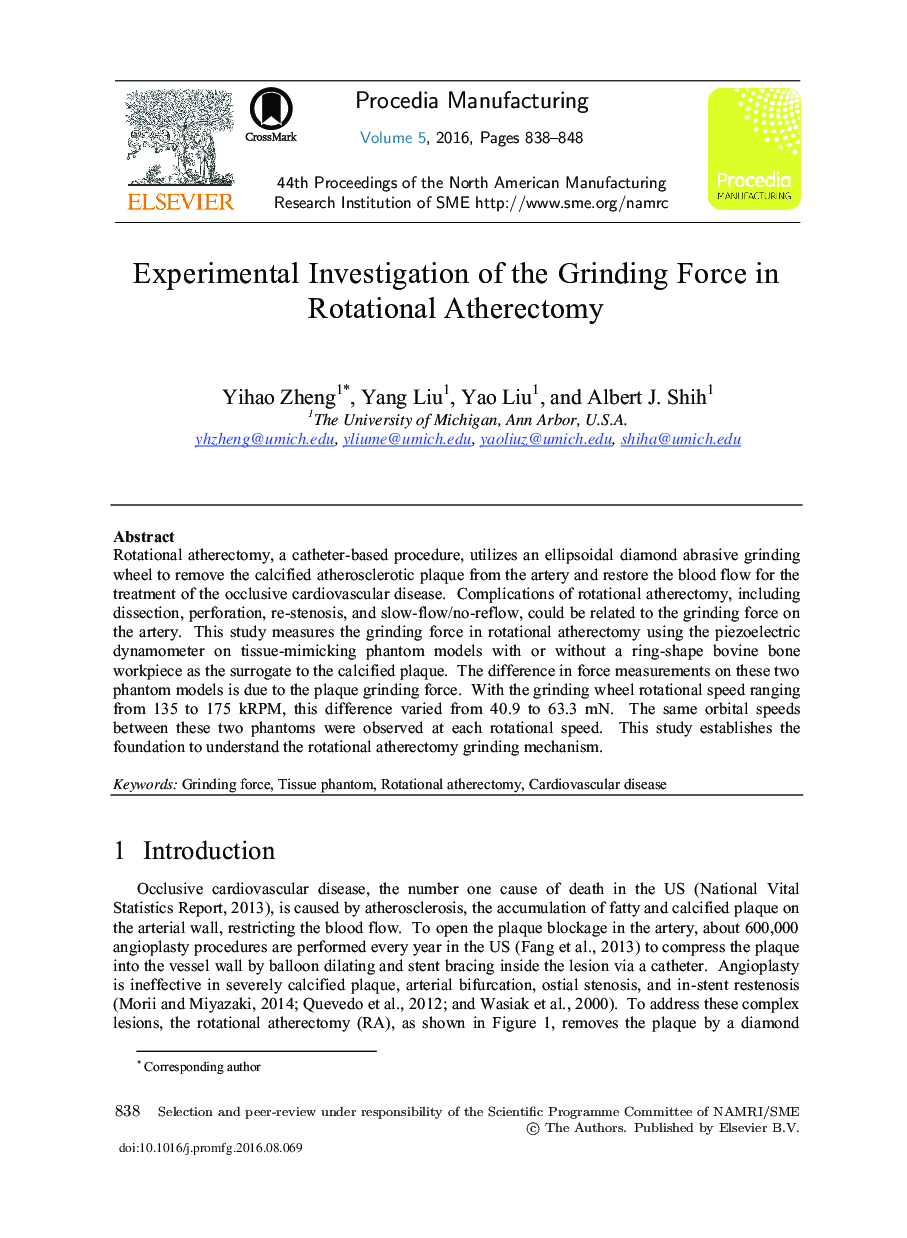| Article ID | Journal | Published Year | Pages | File Type |
|---|---|---|---|---|
| 5129068 | Procedia Manufacturing | 2016 | 11 Pages |
Rotational atherectomy, a catheter-based procedure, utilizes an ellipsoidal diamond abrasive grinding wheel to remove the calcified atherosclerotic plaque from the artery and restore the blood flow for the treatment of the occlusive cardiovascular disease. Complications of rotational atherectomy, including dissection, perforation, re-stenosis, and slow-flow/no-reflow, could be related to the grinding force on the artery. This study measures the grinding force in rotational atherectomy using the piezoelectric dynamometer on tissue-mimicking phantom models with or without a ring-shape bovine bone workpiece as the surrogate to the calcified plaque. The difference in force measurements on these two phantom models is due to the plaque grinding force. With the grinding wheel rotational speed ranging from 135 to 175 kRPM, this difference varied from 40.9 to 63.3 mN. The same orbital speeds between these two phantoms were observed at each rotational speed. This study establishes the foundation to understand the rotational atherectomy grinding mechanism.
